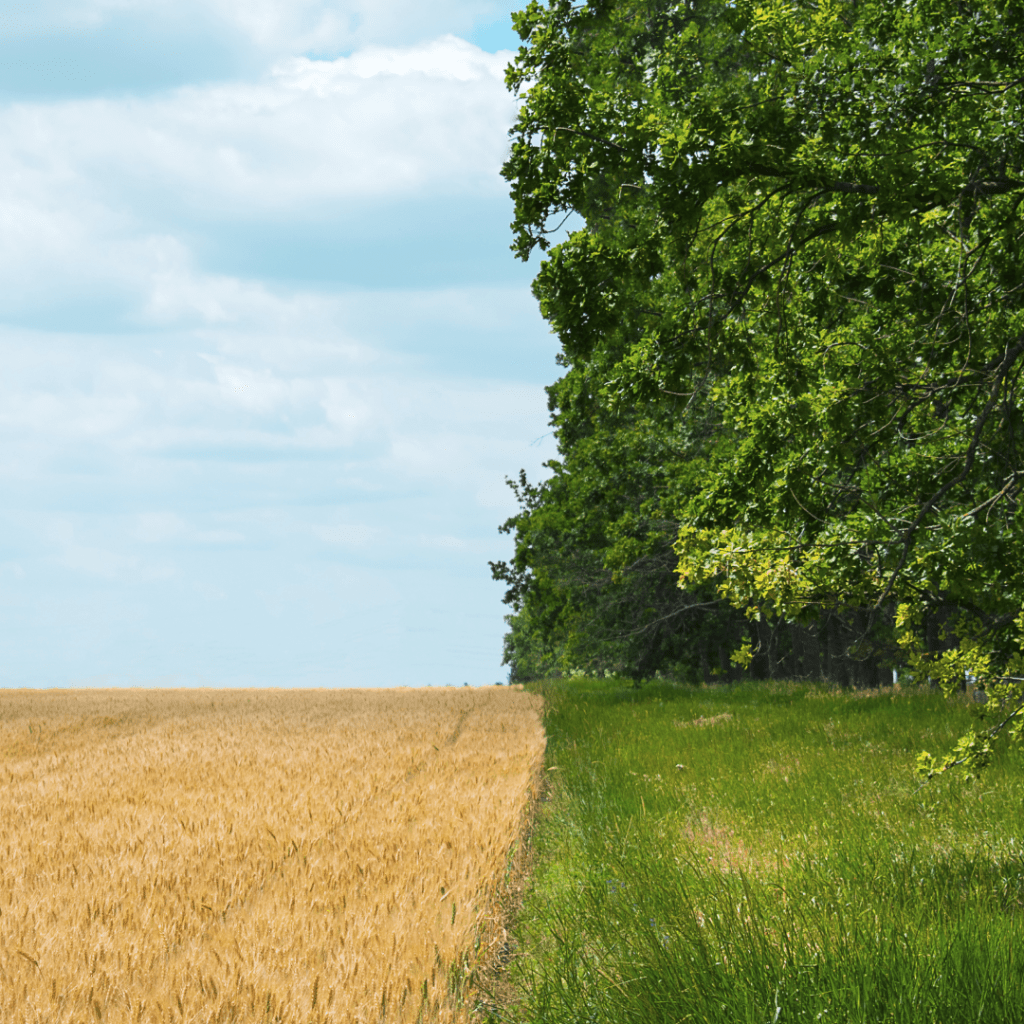Looking for a Long-Term Investment? Try Regenerative Agriculture.
Why Regenerative Agriculture Should Be in Your Business Plan
If you were considering purchasing a building, and you learned that during the next 50 years, a third of the building would fall into disrepair, how would you feel about that investment? Although many investments focus on short-term gains, you might reconsider buying that particular building.
Land in a conventional farming system is just like that building.
Regenerative agriculture, in contrast to conventional, takes the principles of organic and runs with them, aiming not just at minimized chemical use or sustainability, but at measurably improving the land and water, as well as the health and economic and spiritual well-being of farmers, farmworkers, and farm animals.

Your building now? It will repaint itself every year.
At the environmental level, this system of farming enriches soils, increases biodiversity, and fosters healthy ecosystems and watersheds. Regenerative agriculture is proving to be a key factor in how we reverse global climate change, as well as affecting land system change, biochemical flows, ocean acidification, and the hydrological cycle in positive ways.
At the community level, regenerative agriculture can increase farmer and rancher livelihood resilience and the well-being of communities and economies.
And what about on the business level? Can moving from traditional cropping systems to regenerative agriculture be profitable? Yes!
The Business Side of Regenerative Agriculture
There is a valuable case to be made for the business side of regenerative agriculture. It takes long-term vision, understanding, and willingness to see connections in how we work together with the land, the elements, and our communities.
Regenerative agriculture can work, and it can increase the profitability of farmland. Over time, this increased profitability can increase the value of an investor’s farmland asset. Regenerative agriculture also presents opportunities beyond asset ownership, including infrastructure investments, and financing for transitioning from a conventional system, among other activities.
Opponents to regenerative (and organic) agriculture often argue about the decreases in yield, but under the right conditions, and by taking a holistic view of farmland operations and the underlying asset value, the profitability of a farm can increase through regenerative agriculture, all while reducing risk and crop loss.
The Ecdysis Foundation reviewed 20 farms to investigate yields, pests, and profitability of regenerative systems. The researchers ranked farms based on their implementation of regenerative agriculture practices and then looked at soil organic matter, pest presence, crop yield, and profit.
As expected, crop yields decreased significantly (up to 29%) in regenerative systems, and yield has traditionally served as the metric of interest for farmers. However, the decrease in yield does not tell the whole story. The study also found that the farms with regenerative practices were 78% more profitable than conventional plots. This increase in profitability was the result of two main factors: input costs and end markets.
The Pros of Regenerative Agriculture Systems
Regenerative agricultural systems require less external inputs, such as seed and fertilizer. The research team observed an increase in soil organic matter, which means more necessary nutrients are available to crops. This soil organic matter decreases the need for external fertilizer. In conventional farming systems, nearly one third of farmers’ gross income went into external inputs. In regenerative systems, only 12% of income went back to external inputs like fertilizers.

Increasing soil organic matter also increased the diversity of insects found in the soil. In cornfields, for example, insect diversity decreases harmful pest abundance. This leads to stronger crops.
Farmers are able to benefit from a higher-value product. This is true even if they aren’t able to produce the same high yields in terms of bushels per acre. This trade-off is a net positive on the ground. It confirms that soil organic matter might just be a more important driver of approximate farm profitability than yield.
And when the crops hit the market? Regenerative farmers received higher premiums for their crop with their certification labels.
Data from New Hope Network’s 2017 study shows the shifts occurring in consumer values. Many consumers are considering the broader impacts of their purchasing. Additionally, they are using a deeper process of ethical decision-making. This consumer process supports the transition to regenerative agriculture. In fact, 62% of millennials were found to be willing to pay more to support responsible business practices, responsibly produced food, and brands that practice environmental responsibility.
Not convinced yet? In addition to the millennial market, 65% of natural products brands are interested in sourcing ingredients from regenerative agriculture systems. A survey of farmers asked them what ti take for them to make the transition to regenerative practices. Sixty-five percent said proven profitability and 53% said reduced costs. Additionally, 41% said market demand, and 41% said multi-year contracts would be necessary for them to seriously consider making the shift.
The conclusion is that the responsibility falls largely on the brands to link consumer demand to farmer willingness to transition. (Ding, ding! Here’s where we come in!)


